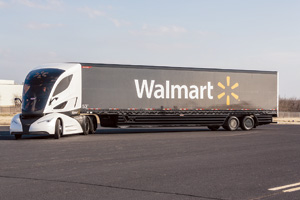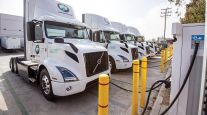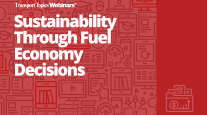Managing Editor, Features and Multimedia
First Trailer GHG Goals Attainable Utilizing Existing Tech, Makers Say

Trailer manufacturers said the initial goals of the federal government’s first-ever proposal for trailer efficiency standards will be attainable through existing technologies.
“We are encouraged by our initial evaluation of the proposed regulations,” said Jamie Scarcelli, vice president of corporate strategy and governmental affairs at Wabash National Corp. “For the first few stages of compliance, the rule focuses on use of existing, proven technology.”
In the proposed Phase 2 greenhouse-gas rule, the Environmental Protection Agency said it will initiate its trailer program in 2018 with “modest” standards that dry vans and refrigerated trailers could meet with SmartWay-verified aerodynamic additions and tire technologies. Other trailer types can achieve the initial standards using only tire technologies, EPA said.
SmartWay is an EPA program that helps the freight transportation sector decrease emissions that affect climate change.
The proposed rule’s following stages in 2021, 2024 and 2027 would continue to raise the bar for fuel economy and emissions reductions, eventually requiring fuel-economy gains of 3% to 8%, depending on the trailer category.
For trailers where aerodynamic devices are not practical, such as flatbeds, tankers and container chassis, EPA and the National Highway Traffic Safety Administration are proposing design standards requiring low-rolling-resistance tires and automatic tire-inflation systems, rather than setting emission or fuel-consumption standards.
Glenn Harney, chief sales officer at Hyundai Translead, also said it appears trailer makers can achieve the goals with existing technologies.
“From our basic understanding, it is a well-conceived program that offers flexibility, time to implement and relies on existing technology with the option to innovate instead,” he said. “We don’t yet fully understand the cost of certifying the trailers by model, but it does not appear to be excessive.”
Utility Trailer Manufacturing Co. noted that said some elements of the proposal remain unclear or appear to be ambiguous.
“If the final rule is anywhere near this current format, it’s dictating the use of aerodynamic devices and tire-inflation systems and low-rolling resistance tires,” said Craig Bennett, senior vice president of sales and marketing.
Those are options Utility currently offers to customers for compliance with California regulations and for certification under SmartWay.
Bennett said it was not yet clear what the government would use as a baseline for its efficiency goals, but if it uses a trailer with no added aerodynamic treatments, improving its efficiency by 8% would be “easily achievable” with existing technology.
Great Dane Trailers and Stoughton Trailers both said last week they were still reviewing the proposal and declined further comment.
At this point, Wabash does not believe the basic design of a van trailer will need to change for the 2018, 2021 and 2024 standards, Scarcelli said. However, as the industry moves toward the more stringent 2027 levels “we will need to look at multiple solutions, including new aerodynamic technology and trailer designs.”
He added: “From what we have been able to interpret, low-rolling-resistance tires and automatic tire-inflation systems will be required as standard on all new trailers. As far as side skirts and other aero devices, we will continue to offer multiple options that provide flexibility in complying with these new regulations.”
Scarcelli said the added cost for new trailers under the proposed regulations would depend on the specific technology but would likely rise by about $1,500 to $1,700 for 2018 and increase further from there.EPA and NHTSA estimate the additional cost at almost $1,300 per trailer.
Hyundai’s Harney estimated the proposed regulation would add a minimum of about $1,000 to the price of a new trailer, but that figure could reach several thousand dollars for the maximum packages.
Charles Ducas, senior vice president of sales, marketing and business development at Kentucky Trailer, said he hasn’t seen anything unexpected in the proposal thus far.
The main recommendations — aerodynamic devices, low-rolling-resistance tires, automatic tire inflation and weight reduction — are currently offered by Kentucky Trailer, he said.
“Since we’re a custom manufacturer, we’re constantly playing with those four variables to better suit a customer’s needs,” Ducas said. “That would be taken completely in stride.”
Kentucky Trailer builds products for the moving and storage industry.




